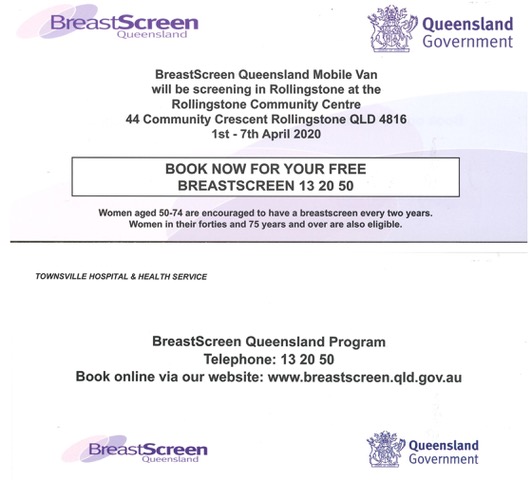This email is to advise that the Department of Transport and Main Roads (TMR) will be undertaking geotechnical investigations on Mount Spec Road from Monday 17 February through to Friday 6 March 2020.
Traffic changes and road closures will be in place during these works. Please see details below.
Services Location works:
Monday 17 February 2020
Work hours: 10.30am to 3pm.
Traffic changes: Stop/go traffic controllers will be in place on either end of the work zone to allow traffic through works site – all traffic (including visitors) will be allowed through the works zone.
Geotechnical Investigations (Drilling works):
Sunday 23 February to Thursday 27 February
Work hours: 7pm – 5am (Night Works).
Traffic changes: A full road closure is required during works. No traffic will be allowed through the works zone during these times (Emergency vehicles expected).
Surveying works: Monday 24 February to Friday 6 March
Weekdays only (Monday to Friday)
Work hours – 6am to 5pm (see breakdown below).
6am – 9am: Stop/go traffic controllers will be on site to direct traffic. Maximum wait time for travellers < 30 seconds.
Tour group bookings and local residents only will be allowed through the works zone.
9am – 3pm: Full Road Closure – Tour groups, buses and residents ONLY will be let through, timing based on information provided. Residents should contact TMR on the details below for further information.
3pm – 5pm: Stop/go traffic controllers will be on site to direct traffic. Maximum wait time for travellers < 30 seconds.
Tour group bookings and local residents only will be allowed through the works zone.
A full road closure will be in place for all other visitors. Visitors will be directed to turn around at Little Crystal Creek bridge. Little Crystal Creek will remain open during the works.
Should you have any questions regarding the above information, please do not hesitate to contact me on the details below.
Meghan
Customer and Stakeholder Management (Northern) | North Queensland Region
Program Delivery And Operations | Infrastructure Management & Delivery Division |
Department of Transport and Main Roads
Floor 6 | Townsville Government Office Building | 445 Flinders Street | Townsville Qld 4810
PO Box 1089 | Townsville Qld 4810
P: 1800 625 648 | F: (07) 4421 8711
E: engagement.northern@tmr.qld.gov.au
W: www.tmr.qld.gov.au






